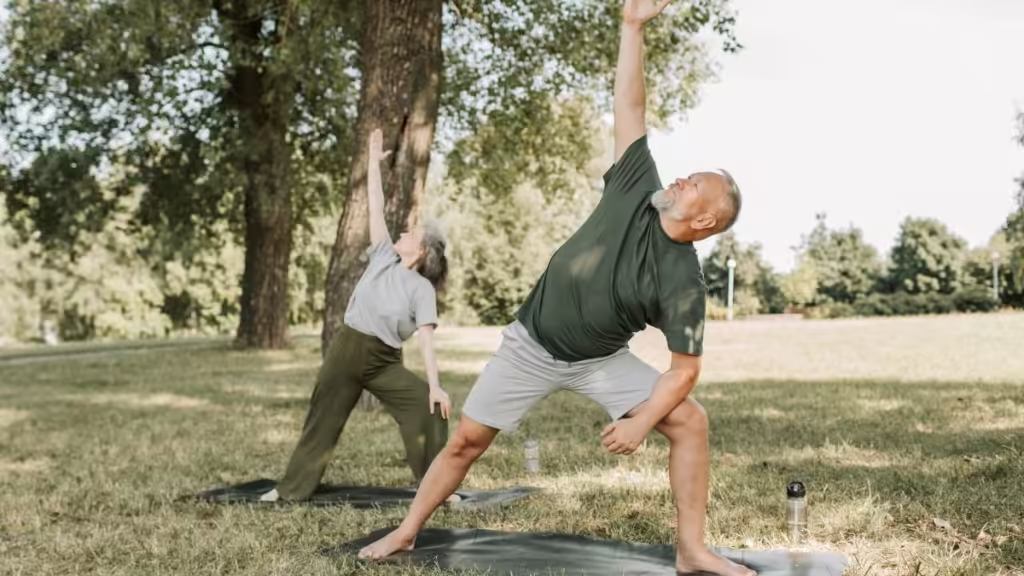Staying fit and healthy is a goal many of us share, but with busy schedules, it can feel challenging. The COVID-19 pandemic has reminded us how crucial it is to prioritize our health. The good news? You don’t need a complicated plan to get started. By focusing on a few key habits, you can improve your fitness and overall well-being. In this guide, we’ll walk you through simple, actionable steps to help you lead a healthier life.
Table of Contents
How to Stay Fit and Healthy
1. Eat a Balanced Diet

Your diet plays a crucial role in your overall health. A balanced diet provides your body with the nutrients it needs to function optimally. Here’s how to get started:
Focus on Whole Foods: Incorporate fruits, vegetables, whole grains, lean proteins, and healthy fats into your meals. These foods are rich in vitamins, minerals, and fiber.
Limit Processed Foods: Reduce your intake of packaged snacks, sugary drinks, and fast food, which are often high in salt, sugar, and unhealthy fats.
Stay Hydrated: Drink plenty of water throughout the day. Aim for 3-4 liters daily to support digestion, energy levels, and overall health.
Prioritize Protein: Protein is essential for muscle repair and growth. Aim for 0.8 grams of protein per kilogram of body weight daily.
For more tips on healthy eating, check out this guide from the [World Health Organization (WHO)]
2. Stay Active Every Day

Regular physical activity is key to staying fit, but it doesn’t have to mean hours at the gym. Find activities you enjoy and make them part of your routine:
Aim for 30 Minutes Daily: Whether it’s walking, cycling, swimming, or dancing, aim for at least 30 minutes of moderate activity each day.
Incorporate Strength Training: Build muscle and improve strength with bodyweight exercises (like squats and push-ups), resistance bands, or weights.
Reduce Sedentary Time: If you have a desk job, take short breaks to stand, stretch, or walk around. Small movements add up!
Maintain a Healthy Weight: Excess weight can lead to health issues like diabetes and high blood pressure. Regular exercise and a balanced diet can help you stay within a healthy range.
Learn more about the benefits of physical activity from the [Centers for Disease Control and Prevention (CDC)].
3. Prioritize Quality Sleep
Sleep is often overlooked but is just as important as diet and exercise. It’s during sleep that your body repairs and rejuvenates itself.
Aim for 7-9 Hours: Most adults need 7-9 hours of sleep per night for optimal health.
Create a Relaxing Routine: Avoid screens before bed, dim the lights, and engage in calming activities like reading or meditation.
Stick to a Schedule: Going to bed and waking up at the same time every day helps regulate your body’s internal clock.
For more tips on improving sleep, visit the [Sleep Foundation].
4. Manage Stress Effectively
Chronic stress can negatively impact both your mental and physical health. Learning to manage stress is essential for overall well-being.
Practice Mindfulness: Techniques like meditation, deep breathing, or yoga can help you stay calm and focused.
Take Breaks: Step away from work or social media to recharge. Engage in hobbies or activities that bring you joy.
Stay Connected: Talk to friends, family, or a therapist to maintain emotional balance.
Explore mindfulness techniques with [Mindful.org].
5. Set Realistic Goals and Stay Consistent
Consistency is the key to long-term success. Instead of drastic changes, focus on small, sustainable habits.
Start Small: Begin with one or two changes, like adding more vegetables to your meals or taking a daily walk.
Track Your Progress: Use a journal or app to monitor your habits and celebrate your achievements.
Be Patient: Health improvements take time. Stay consistent, and you’ll see results.
6. Listen to Your Body
Your body knows best. Pay attention to its signals and adjust your routine accordingly.
Don’t Ignore Pain: If you experience pain during exercise, stop and seek professional advice if needed.
Rest When Necessary: Recovery is just as important as activity. Give your body time to heal and grow stronger.
7. Health and Fitness Statistics
Here are some eye-opening statistics about health and fitness:
Only 23% of adults meet recommended exercise guidelines.
Just 10% of adults consume the recommended daily amount of fruits and vegetables.
35% of adults experience sleep deprivation.
3.2% of global deaths are linked to physical inactivity.
13% of the world’s population is obese.
Source: [World Health Organization (WHO)]
8. Conclusion
Staying fit and healthy doesn’t have to be overwhelming. By making small, consistent changes to your diet, activity levels, sleep habits, and stress management, you can achieve a healthier, happier life. Remember, it’s all about balance and listening to your body. Start today, and take it one step at a time!
9. FAQs
How can I stay fully fit and healthy?
Focus on a balanced diet, regular exercise, quality sleep, stress management, and consistency. Small, sustainable changes lead to long-term results.
Can I get fit at home?
Absolutely! Bodyweight exercises like squats, push-ups, and sit-ups can be done at home. Aim for 30-40 minutes of activity daily.
How much exercise do I need each day?
Aim for at least 30 minutes of moderate exercise, such as walking, cycling, or strength training, to stay fit and healthy.
Also Read

